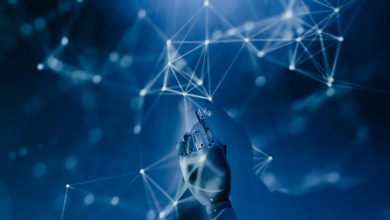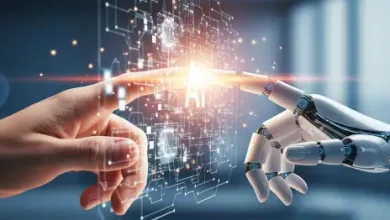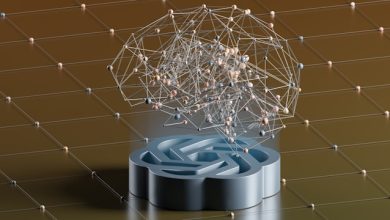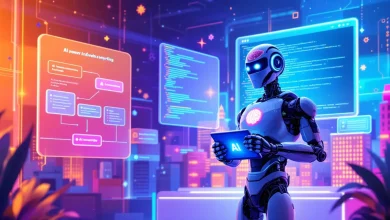
A few weeks ago, a business news channel asked me to comment on whether new tariffs were driving up banana prices. Before the interview, I did something most people would do today: I asked AI.
First, I asked ChatGPT. Then I asked our own system — Helios Horizon — a platform built specifically for agriculture and climate analytics. What came back from each revealed far more than just the forces shaping banana prices. It showed the divide between horizontal and vertical AI — and why that distinction will define the next decade of innovation.
Two AIs, Two Realities
ChatGPT’s answer was quick and confident: Yes, banana prices are rising because of tariffs. A 10% import tax naturally leads to higher consumer prices.
It was a clean, plausible narrative — and completely wrong.
That kind of error is what AI researchers call a “hallucination,” but it’s really just pattern-matching dressed up as reasoning. Large language models like ChatGPT are built to predict the next likely word based on billions of examples. When they’ve seen countless stories linking “tariff increases” to “price hikes,” they assume the same logic applies here. The result feels authoritative even when the underlying economics say otherwise.
Helios Horizon’s answer was more nuanced. It agreed tariffs contributed, but showed that the main drivers of higher banana prices were biological and environmental. Recent fungal disease outbreaks in Latin America had cut yields. Extreme weather disrupted harvests. Rising freight costs and port delays squeezed supply. The tariff, in other words, was an accelerant — but not the spark.
Horizon reached that conclusion not because it’s “smarter,” but because it’s specialized. It draws on proprietary climate, crop, and logistics datasets and uses what we call contextual retrieval-augmented generation (RAG) — meaning it doesn’t just retrieve information, it reasons through how multiple datasets interact before generating an answer. Instead of treating the world as text, it treats it as a complex system.
Horizontal vs. Vertical AI
That contrast — between a generalist AI that can answer any question and a specialist AI that understands a specific domain — captures a fault line emerging across industries.
Horizontal AI platforms like ChatGPT, Claude, and Gemini are designed for breadth. They can write code, summarize a report, or draft an email. They’re immensely valuable for generic reasoning, but they’re trained on open-web data and optimized for conversational plausibility, not domain precision.
Vertical AI, by contrast, is trained for depth. These systems are built for one industry, infused with proprietary data, and structured around that domain’s decision logic — whether that’s diagnosing disease, forecasting energy demand, or analyzing commodity supply chains. They don’t just “sound” correct; they have the context to be correct.
If horizontal AI is the digital equivalent of Wikipedia — a broad, accessible knowledge layer — vertical AI is the domain-expert layer sitting on top of it, more like a surgeon, financial analyst, or agronomist. The first can tell you about the problem; the second can help you solve it.
And crucially, vertical AI doesn’t seek to replace human expertise; it amplifies it. A domain specialist working alongside a domain-trained model gains leverage, not redundancy. Together, they can process more data, simulate more scenarios, and act faster — all while maintaining the rigor that industry decisions demand.
Why It Matters
In legacy industries — agriculture, manufacturing, energy, logistics — wrong answers have real-world costs. A generalist model that confidently tells a logistics manager that a price spike is due to tariffs might cause them to hedge the wrong risk or reorder inventory unnecessarily. In contrast, a vertical model trained on sensor data, satellite imagery, and trade flows can surface the true culprit — a fungal outbreak or weather anomaly — and predict how long the disruption will last.
This isn’t an argument against horizontal AI. In fact, the two are complementary. Horizontal models are already revolutionizing knowledge work, communications, and creative tasks. But when it comes to the messy, physics-bound problems of the real world, the next wave of progress will come from specialized systems that embed reasoning directly into the data that defines an industry.
The difference isn’t just accuracy. It’s accountability. In sectors where decisions affect livelihoods, supply chains, and public safety, explainability matters as much as output. A vertical model can show why it reached a conclusion, pointing to the datasets and causal relationships that support its reasoning. That transparency builds trust — something even the most capable horizontal AIs still struggle to earn.
The Next Decade of AI
Over the next ten years, the world will likely see an explosion of vertical AI platforms:
- In healthcare, AIs trained on radiology and genomic data rather than internet text.
- In finance, models built on transaction-level and macroeconomic data rather than news articles.
- In manufacturing, systems that ingest sensor and maintenance data to prevent downtime before it happens.
Generalist AIs will continue to dominate headlines, but vertical AIs will quietly dominate balance sheets. They’ll be the ones diagnosing disease, preventing crop failure, predicting supply shocks, and keeping factories humming. Their advantage won’t be linguistic fluency; it’ll be operational intelligence — the ability to turn data into decision-ready insight.
From Information to Action
The real promise of vertical AI lies in turning analysis into action. When an AI can simulate a drought’s effect on soybean yields or a port closure’s ripple through a shipping network, it empowers decision-makers to act before the crisis hits. That shift — from reactive to anticipatory — is what will separate tomorrow’s resilient organizations from those caught flat-footed.
In the same way that cloud computing once transformed IT from a cost center into a growth engine, vertical AI will turn data itself into a form of adaptive infrastructure. Each model trained on a company’s proprietary ecosystem becomes a living reflection of how that business operates — learning, iterating, and improving over time.
The Lesson in a Banana
The banana story is small, but the lesson is big: the future of AI won’t be defined by who talks the best — it’ll be defined by who knows the best.
Horizontal AI will keep democratizing access to knowledge. Vertical AI will turn that knowledge into capability. And for legacy industries under pressure to modernize, that capability could be the difference between resilience and obsolescence.
The next decade won’t belong to the loudest models, but to the ones that understand their world deeply enough to change it.




